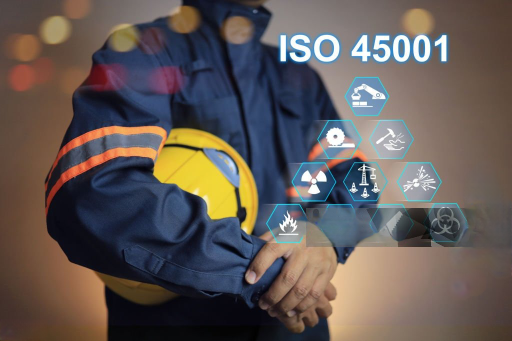Picture this: a field engineer is perched atop a cell tower, 100 feet in the air, tweaking equipment in the biting May wind. One wrong move, one overlooked hazard, and the consequences could be devastating. It’s not just a job—it’s a high-wire act where safety isn’t optional; it’s everything. So, how do you ensure your team comes home safe every day? Enter ISO 45001, the global standard for occupational health and safety that’s tailor-made for industries like telecom and field engineering, where risks lurk around every corner.
If you’re in telecom or field services, you know the stakes. Your crew faces electrical hazards, confined spaces, and unpredictable weather, all while keeping our hyper-connected world running. ISO 45001 isn’t just a certification to hang on the wall—it’s a playbook for building a culture where safety comes first. Let’s unpack why this matters, what it involves, and how it can transform your operations without tying you up in red tape.
Why Safety Is the Backbone of Telecom and Field Engineering
You don’t need me to tell you that telecom work isn’t for the faint of heart. Whether it’s installing fiber optic cables in a remote trench or maintaining a 5G tower during a storm, your team is constantly navigating risks that most office workers can’t even imagine. Think of safety as the steel backbone of a cell tower: without it, everything collapses.
The numbers back this up. According to the U.S. Bureau of Labor Statistics, the telecom industry sees higher-than-average rates of workplace injuries, with falls and electrical incidents topping the list. Every accident isn’t just a statistic—it’s a person, a family, a team member who deserves better. That’s where ISO 45001 steps in, offering a structured way to identify risks, train your crew, and prevent disasters before they happen. Because, honestly, who doesn’t want their team to clock out safely every day?
So, What’s This ISO 45001 Thing, Anyway?
If you’re picturing a dusty binder full of jargon, let me set you straight. ISO 45001 is a global standard, launched in 2018 by the International Organization for Standardization, designed to make workplaces safer. It’s not about checking boxes or drowning in paperwork—it’s about creating a system that keeps your people protected, no matter the job.
Think of it like a playbook for a football team. Just as a coach drills players on strategies to avoid fumbles, ISO 45001 gives you tools to spot hazards, train workers, and respond to emergencies. For telecom and field engineering, it’s especially relevant because it’s flexible enough to cover everything from office ergonomics to high-risk fieldwork. And no, it’s not just for big corporations—small and mid-sized firms can (and do) adopt it too.
Here’s the thing: some folks think ISO 45001 is overkill, like putting a helmet on for a desk job. But in an industry where one misstep can change lives, it’s more like wearing a harness while scaling a tower. It’s practical, not paranoid.
The Nuts and Bolts: How ISO 45001 Fits Your Industry
So, what does ISO 45001 actually do? It’s built around a few core ideas that mesh perfectly with the telecom and field engineering world. Let’s break it down:
- Risk Assessment: You identify hazards specific to your work—say, electrical shocks from faulty equipment or falls from poorly secured ladders. Then, you plan how to mitigate them. For example, regular equipment checks or mandatory harness training.
- Worker Involvement: Your field techs aren’t just cogs in a machine—they’re your eyes and ears. ISO 45001 encourages involving them in safety decisions, like reporting near-misses on a remote site.
- Emergency Preparedness: From storms knocking out power to accidents in confined spaces, you need a plan. ISO 45001 ensures you’re ready, with clear protocols for evacuations or first aid.
- Continuous Improvement: Safety isn’t a one-and-done deal. The standard pushes you to keep refining your processes, whether it’s updating training or investing in better gear.
For telecom, this translates to real-world scenarios. Imagine a crew installing antennas in a rural area. ISO 45001 would prompt you to assess risks like unstable terrain, ensure workers have proper PPE (personal protective equipment), and have a clear evacuation plan if a storm hits. It’s not rocket science—it’s common sense, systematized.
Why Go Through the Hassle of Certification?
You might be thinking, “Sounds great, but why bother with the formal certification?” Fair question. Getting ISO 45001 certified isn’t just about bragging rights—it delivers tangible benefits that hit your bottom line and your team’s morale.
For starters, it reduces accidents. Studies show that companies with robust safety systems see up to 20% fewer workplace injuries. In telecom, where a single fall can cost thousands in medical bills (not to mention the human toll), that’s huge. Plus, fewer accidents mean less downtime and fewer workers’ comp claims.
Then there’s your reputation. Clients—think AT&T, Verizon, or local governments—love working with companies that prioritize safety. ISO 45001 certification signals you’re serious, giving you an edge in competitive bids. You know what? In 2025, with sustainability and corporate responsibility trending, that’s a bigger deal than ever.
Oh, and let’s not forget cost savings. Investing in safety now prevents pricey lawsuits or OSHA fines later. A quick aside: I was reading about a telecom firm that got slapped with a $50,000 fine for lax safety protocols. Ouch. ISO 45001 Certification helps you stay ahead of the curve, keeping regulators off your back.
The Certification Journey: One Step at a Time
Okay, so you’re sold on the idea. But how do you actually get certified? Don’t worry—it’s not as daunting as it sounds. Think of it like climbing a tower: you don’t leap to the top; you take it one rung at a time.
- Gap Analysis: Start by comparing your current safety practices to ISO 45001 requirements. Tools like DNV’s audit software or consultants like Bureau Veritas can help spot weak points.
- Build Your System: Create a safety management system tailored to your operations. This includes documenting procedures, training your team, and setting safety goals.
- Training and Engagement: Get everyone on board, from field techs to C-suite execs. Online platforms like Safety Skills offer telecom-specific courses that align with ISO 45001.
- Internal Audit: Test your system to ensure it’s working. Think of it as a dress rehearsal before the big show.
- Certification Audit: An external auditor (e.g., SGS or TÜV SÜD) reviews your system. If you pass, you’re certified. If not, they’ll guide you on fixes.
The process typically takes 6-12 months, depending on your company’s size and starting point. Yes, it’s an investment—of time, money, and effort—but the payoff is worth it. Plus, plenty of firms offer step-by-step guidance to make it less overwhelming.
Challenges You’ll Face (And How to Dodge Them)
Let’s be real: no journey is without bumps. ISO 45001 certification comes with challenges, especially in an industry as fast-paced as telecom. Here are a couple you might hit, along with ways to tackle them.
- Resistance to Change: Field crews might roll their eyes at new safety protocols, thinking, “We’ve always done it this way.” Solution? Involve them early. Let techs suggest practical improvements, like better harness designs. When they feel heard, they’re more likely to buy in.
- Costs: Training, audits, and system upgrades aren’t cheap. But think long-term: a single avoided accident can cover those costs. Plus, some governments offer grants for safety initiatives—check with your local OSHA office.
Ever wonder why some companies drag their feet on safety? It’s usually fear of the unknown. But with ISO 45001, you’re not reinventing the wheel—you’re just making it spin smoother.
Wrapping It Up: Make Safety Your Superpower
Here’s the bottom line: ISO 45001 isn’t just a certification—it’s a commitment to your team, your clients, and your future. In the high-stakes world of telecom and field engineering, where every job carries risks, it’s your safety net, your competitive edge, and your peace of mind, all rolled into one.
As 2025 kicks into gear, why not make safety your resolution? Whether you’re a small contractor or a telecom giant, ISO 45001 gives you the tools to protect your people and build a reputation that stands tall. So, what’s stopping you? Take that first step—your team deserves it.



